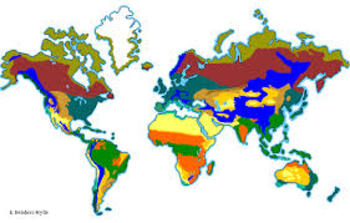Terrestrial Biomes PPT Bundle
- Zip
Products in this Bundle (14)
showing 1-5 of 14 products
Bonus
Description
Have you been tasked with teaching a middle school science elective class of your own creation? Trying to figure out how to provide some remote science lessons to your K-8 students? Feeling-out homeschooling for the first time? Teach your students about the wonderful diversity of nature found on our planet! In this bundle, you receive 7 powerpoints covering 7 key terrestrial (land) biomes: Tundra, Taiga, Temperate Deciduous Forest, Rainforest, Grasslands, Desert, and Alpine. Each powerpoint emphasizes the nonliving abiotic factors (weather, land features, location) and living biotic factors (plant and animal life) for each biome. Each powerpoint is full of great visuals and scaffolding, as well as accompanied by a student handout for guided notes.
As a thank you for purchasing this Biomes Bundle, I will also include a list of resources/lesson ideas that can easily be added to your Biomes lessons to enrich learning for older students, as well as extend the length of this unit to a quarter or longer!


